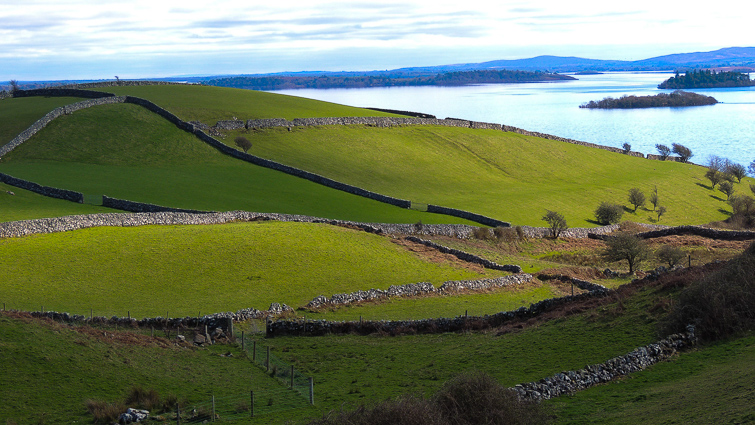Dry Stone Walls in Co. Mayo

Ireland, particularly the West and South, is rich in dry stone walls. It is said that more then 400.000km of dry stone walls can be measured across the whole country.
To visitors, they could seem odd and unusual, but to Irish eyes, they belong to their homeland.
The stone walls are constructed from stones without any mortar to bind them together and their existence is both simple and practical.
In many parts of Ireland, the land is very stony, and farmers needed to get rid of stones to clear the soil, farm the fields and divide them. It was easy to solve the problem building walls with the material to hand.
Working with dry stone has a very long history. In North Mayo, the Ceide Fields is an excellent example of how ancestors built walled enclosures in very much the same way as it is still done today.
There are two techniques. The techniques are passed on from generation to generation, and some skills are required.
The simplest and easiest technique is to pile stones and boulders (predominantly limestone) on top of each other.
The more complex technique needs more skills and tools too. Stones are carefully selected, positioned and sometimes cut (corners knocked off).
The tools are simple: a crowbar, a sledgehammer, a lump-hammer, a ball of twine and short hazel rods.
First, the stonewall builders skim off the sods and dig a trench 15 cm deep and 75 cm wide at the base.
Then they start to place the largest stones at the base every 1 m or so and put the smallest stones, called chips or spalls, between the largest ones.
Smallest stones are used to level up the course of the stones and to fill in the holes and the middle of the wall too.
Usually, a wall is made up of nine or ten courses and 1.35-1.5 m in height; it has no capstones but a larger single stone to close off the wall.
The walls may have no gates, but gaps are used. A gap is dismantled and rebuild depending on needs to allow entry or exit.
The techniques are so peculiar to families’ stonewall builders that locals know who built the wall by merely looking at the way the stones are placed.
Irish emigrants exported their dry stone walling technique abroad. Dry stone walls can be found in Scotland, Australia and North America.
